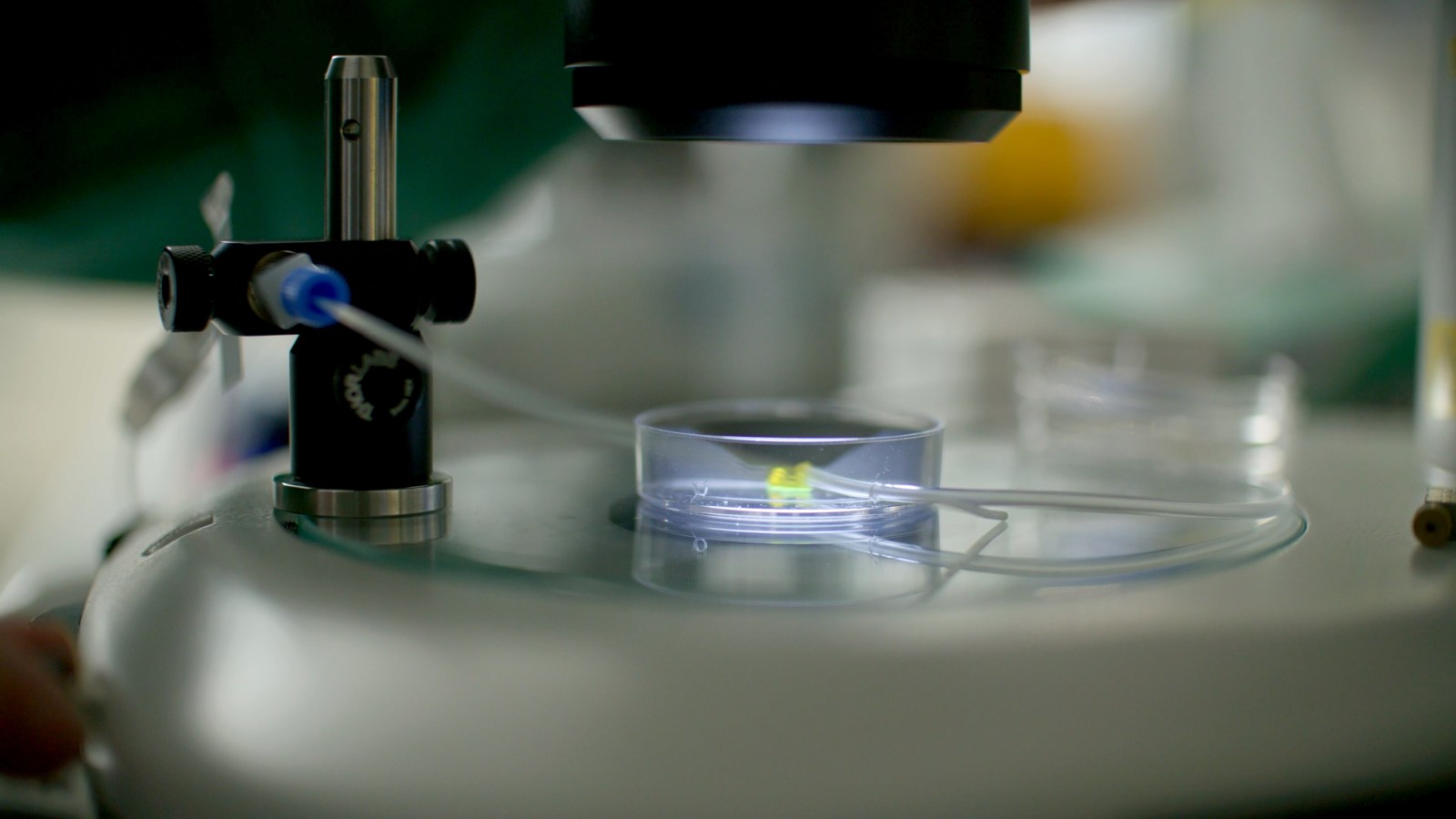US employers are increasingly acknowledging, addressing, and prioritising their employees’ mental and physical well-being to freeze their eggs – and to freeze their time as well.

“When you freeze your eggs, you #freezetime. How often do you get to do that?” asked one of the first US advertisements for egg-freezing. The ad, run on Instagram by a New York City clinic called Extend Fertility, summarised one of the major appeals of egg-freezing: it can allow women to pursue specific personal and professional goals before pursuing parenthood.
“Increased access to fertility care, whether that be education, testing, or preservation services has had a major impact in allowing women to pursue other goals in life before motherhood”, Shelly MacConnell reiterated.
Ms. MacConnell is the Chief Strategy Officer at WIN: the nation’s leading family-building and family well-being benefit company. The company aims to help families through every stage of life with its range of management services, which include those for fertility, maternity, surrogacy, adoption, and parenting.
And, in the process, it has found that women are taking advantage of this “increased access” Once typically reserved for women who had cancer or another medical condition – such as endometriosis or polycystic ovarian syndrome – that could affect their fertility, egg-freezing now can be an option for various women. WIN data showed that, from 2020 to 2023 alone, the demand for egg-freezing services increased 194%.

482 healthy women in the U.S. froze their eggs in 2009, and 22,967 froze their eggs in 2022: a 4665% increase. The number of egg-freezing cycles performed each year, meanwhile, increased from around 7,600 in 2015 to 29,803 in 2022: a 292% increase. The result is that over a million frozen eggs or embryos are stored in the United States today.
Part of this increase can be attributed to changes in women’s lifestyles and life goals. For example, women are becoming mothers at a later age than before; the average age of first-time mothers was 21 in the 1970s and was 27 in 2022. The number of women choosing to have children in their 30s and 40s is also on the rise.
A WIN survey highlighted that 79% of women who became mothers at 35 or older would make the same choice again because of their relationship status (53%), lifestyle (45%), and career goals (36%). 44% of these surveyed women also cited finances as a reason; they might not want to pay “motherhood penalty” – or the disadvantages around advancement, benefits, and pay for women who chose to become mothers – until they have already established themselves professionally.
Or, women might want to focus on increasing their savings. With options such as egg-freezing, they can pursue those goals without feeling as though they’re chained to a biological clock: after all, a woman’s fertility – and the chances of a pregnancy without complications and a baby without health challenges – start to decline around her mid-30s.

But that freedom – or ability to “#freezetime” as Extend Fertility’s Instagram ad proclaimed – can come with a price. For one, the egg-freezing process is physically “arduous”. It starts with ovary-stimulation hormones, which are self-injected – often two or three times per day – for around 10 to 14 days and which aim to increase the number of eggs that women produce (rather than the single egg that they would normally produce per month).
Alongside these injections, patients need appointments for ultrasounds and bloodwork: usually about eight to 10 in a two-week period. When the eggs are the right size, patients take a “trigger shot”, which prepares the body to release the eggs at the right time for retrieval. The ideal number of eggs that women should freeze depends on their age, but, on average, they should freeze between 10 and 20 eggs.
If the number of eggs retrieved and frozen is below that threshold, they might have to undergo another cycle, which includes more appointments, more emotions, more shots, more time – and more money.

As is, the cost of one egg-freezing cycle is about $10,000 to $15,000: a price tag that generally covers an initial consultation, medications, tests and monitoring, anesthesia fees, and the actual retrieval process. If not included, the ovary-stimulating medication can add another $3,000 to $10,800 to the overall cost.
If women need to undergo additional cycles to gather an adequate number of eggs, the cost can increase to $30,000 to $40,000 – not including any storage fees. Once the eggs are retrieved, they are frozen using liquid nitrogen and stored in a lab until they’re ready to be used; those storage fees, while usually $300 to $500 per year, could be up to $800 to $1,000 depending on the fertility center used.
Once a woman is ready to use her eggs, it costs another $5,000 – $7,000 to thaw those eggs, fertilize them with sperm, grow the embryos in a lab, and transfer them to the women’s uterus. Testing the embryos for chromosomal anomalies can cost another $3,000. And this whole process usually isn’t covered by insurance since many insurers view it as an elective procedure, not a medically necessary one.

As of June 2023, only 21 US states required insurance companies to cover fertility treatments, which can include egg-freezing.
Even after all these costs, egg-freezing – like any conception method – is not guaranteed to result in a successful live birth. Even with the ovary-stimulating injections, women might not produce enough eggs, they might not freeze enough eggs, or they might not freeze their eggs at a young enough age. The eggs might not survive the freezing process or the thawing process. And, even if they do survive, they might not fertilize properly or the fertilized embryos might not implant.
All in all, the chance of a live birth from frozen eggs – according to multiple studies – is about one-third: 33%. Due to these various factors, especially the economic costs, egg-freezing has the reputation of being an option only for straight, wealthy white women.
Employers and states, though, are looking to cover some of these costs and, subsequently, broaden the accessibility of this fertility and family-planning service. As Ms. MacConnell summarized, “What was once seen as a completely taboo topic in the workplace, is now a prevalent conversation, and we’re seeing more and more companies realize the importance of offering a robust fertility and fertility preservation benefit”.

WIN has seen this rising prevalence firsthand: its client volume has increased 518% since 2020. Meanwhile, 54% of large employers – including but not limited to WIN’s clients – offer fertility coverage, which can include an infertility diagnosis, egg-freezing, in vitro fertilization (IVF), intrauterine insemination (IUI), and more.
For egg-freezing specifically, 16% of large employers with 500 or more employees cover elective egg freezing – a percent that increases to 37% for large high-tech employers and 63% for Fortune Best Companies – and 43% of large employers covered IVF, up from 27% in 2020.
Altogether, nearly two-thirds of organizations that provide fertility benefits don’t require members to have an infertility diagnosis to be eligible for coverage – thus allowing same-sex couples and single intending parents to access these benefits as well – and 97% of employers offering fertility and family-building benefits do so with no significant cost increase.

Offering these benefits is not only “increasingly popular”, as Ms. MacConnell said, but also “a business imperative to attract and retain top talent”. She cited that 88% of those surveyed say they would consider switching jobs for access to family-building benefits, 61% of employees who received the coverage say they felt more committed to their employer, and only 59% of employees, across ages and across the world, acknowledge their current benefits align with their needs.
For Gen-Z women specifically, who now make up 20.5% of the women in the workforce, 62.7% reported that family-building and maternity support are critical considerations when selecting a new position.
The result is a “critical gap” that, as Ms. MacConnell noted, employers can close by “acknowledging and supporting workforces” through every stage of life. She added, “Over the years, we’ve seen fertility benefits shift to family-building benefits and now they’re evolving to more family wellness benefits”, which can include maternity and parenting as well as support through menopause (when women stop menstruating) or andropause (when men experience age-related declines in testosterone levels).
For context, 99% of women feel menopause symptoms have negatively affected their career and 51% of men reported deterioration in work performance due to andropause.

Going forward, Ms. MacConnell finds it “critical” that these employer benefits are “well designed to protect employees’ access to care”. Benefits that cover egg-freezing are just one aspect of this growing, positive trend: that employers are increasingly acknowledging, addressing, prioritizing, and even protecting their employees’ mental and physical wellbeing to become a desirable workplace, to fill a critical gap, and to allow employees the freedom to freeze their eggs – and to freeze their time as well.
This story was originally published on forbes.com and all figures are in USD.
Look back on the week that was with hand-picked articles from Australia and around the world. Sign up to the Forbes Australia newsletter here or become a member here.


